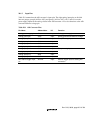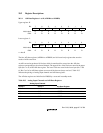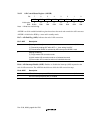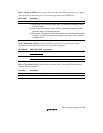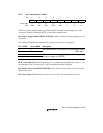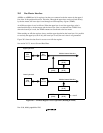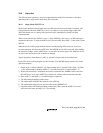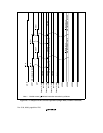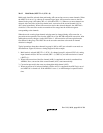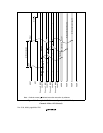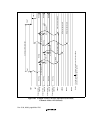
Rev. 5.00, 09/03, page 623 of 760
20.4 Operation
The A/D converter operates by successive approximations with 10-bit resolution. It has three
operating modes: single mode, multi mode, and scan mode.
20.4.1 Single Mode (MULTI = 0)
Single mode should be selected when only one A/D conversion on one channel is required. A/D
conversion starts when the ADST bit is set to 1 by software, or by external trigger input. The
ADST bit remains set to 1 during A/D conversion and is automatically cleared to 0 when
conversion ends.
When conversion ends the ADF bit is set to 1. If the ADIE bit is also set to 1, an ADI interrupt is
requested at this time. To clear the ADF bit to 0, first read ADF when ADF = 1, then write 0 to the
ADF bit.
When the mode or analog input channel must be switched during A/D conversion, to prevent
incorrect operation, first clear the ADST bit to 0 in ADCSR to halt A/D conversion. After making
the necessary changes, set the ADST bit to 1 to start A/D conversion again. The ADST bit can be
set at the same time as the mode or channel is changed.
Typical operations when channel 1 (AN1) is selected in single mode are described next.
Figure 20.3 shows a timing diagram for this example. (The ADCSR register specifies bits in the
operation example.)
1. Single mode is selected (MULTI = 0), input channel AN1 is selected (CH2 = CH1 = 0, CH0 =
1), the A/D interrupt is enabled (ADIE = 1), and A/D conversion is started (ADST = 1).
2. When A/D conversion is completed, the result is transferred into ADDRB. At the same time
the ADF flag is set to 1, the ADST bit is cleared to 0, and the A/D converter becomes idle.
3. Since ADF = 1 and ADIE = 1, an ADI interrupt is requested.
4. The A/D interrupt handling routine starts.
5. The routine reads ADCSR, then writes 0 to the ADF flag.
6. The routine reads and processes the conversion result (ADDRB = 0).
7. Execution of the A/D interrupt handling routine ends. Then, when the ADST bit is set to 1,
A/D conversion starts and steps 2 to 7 are executed.



